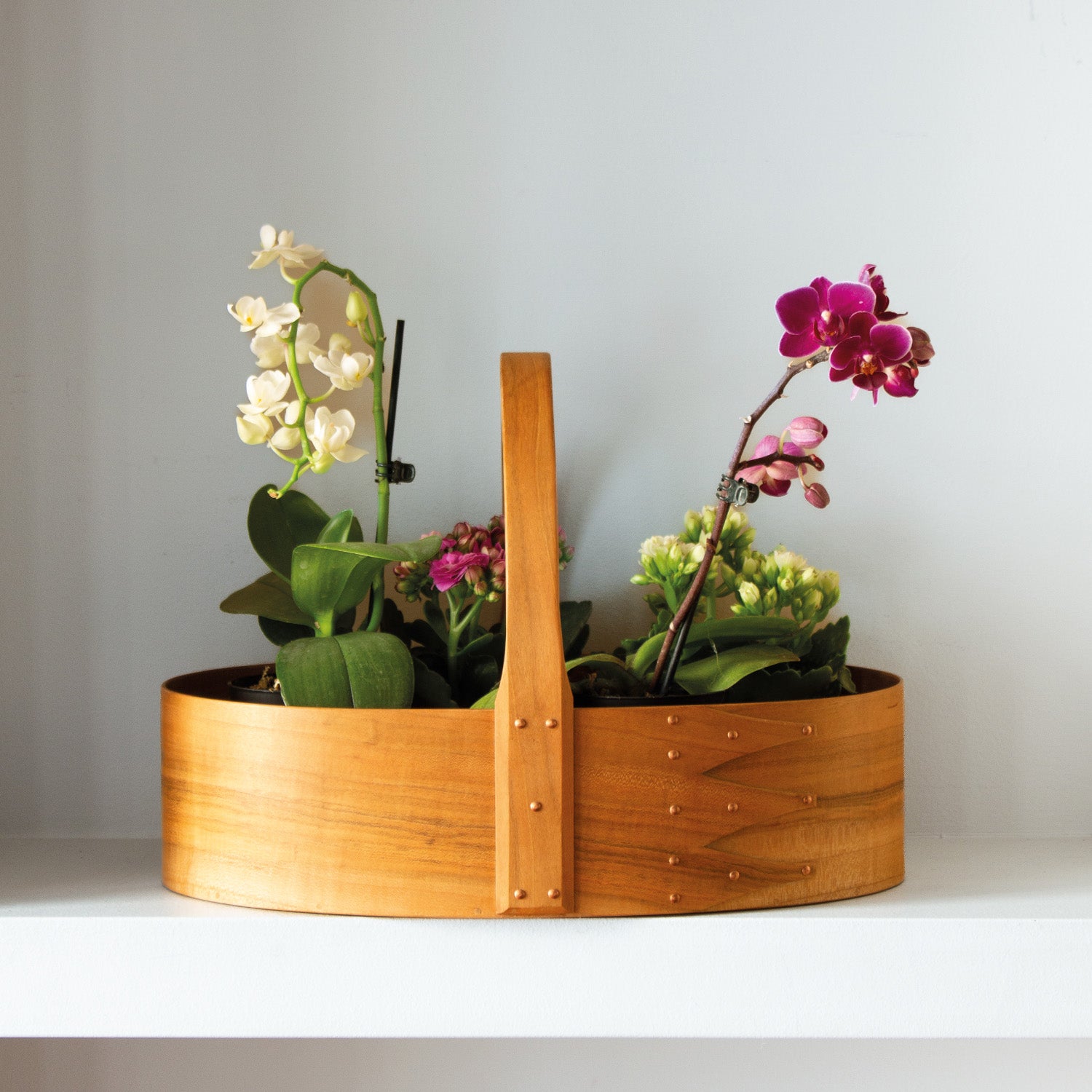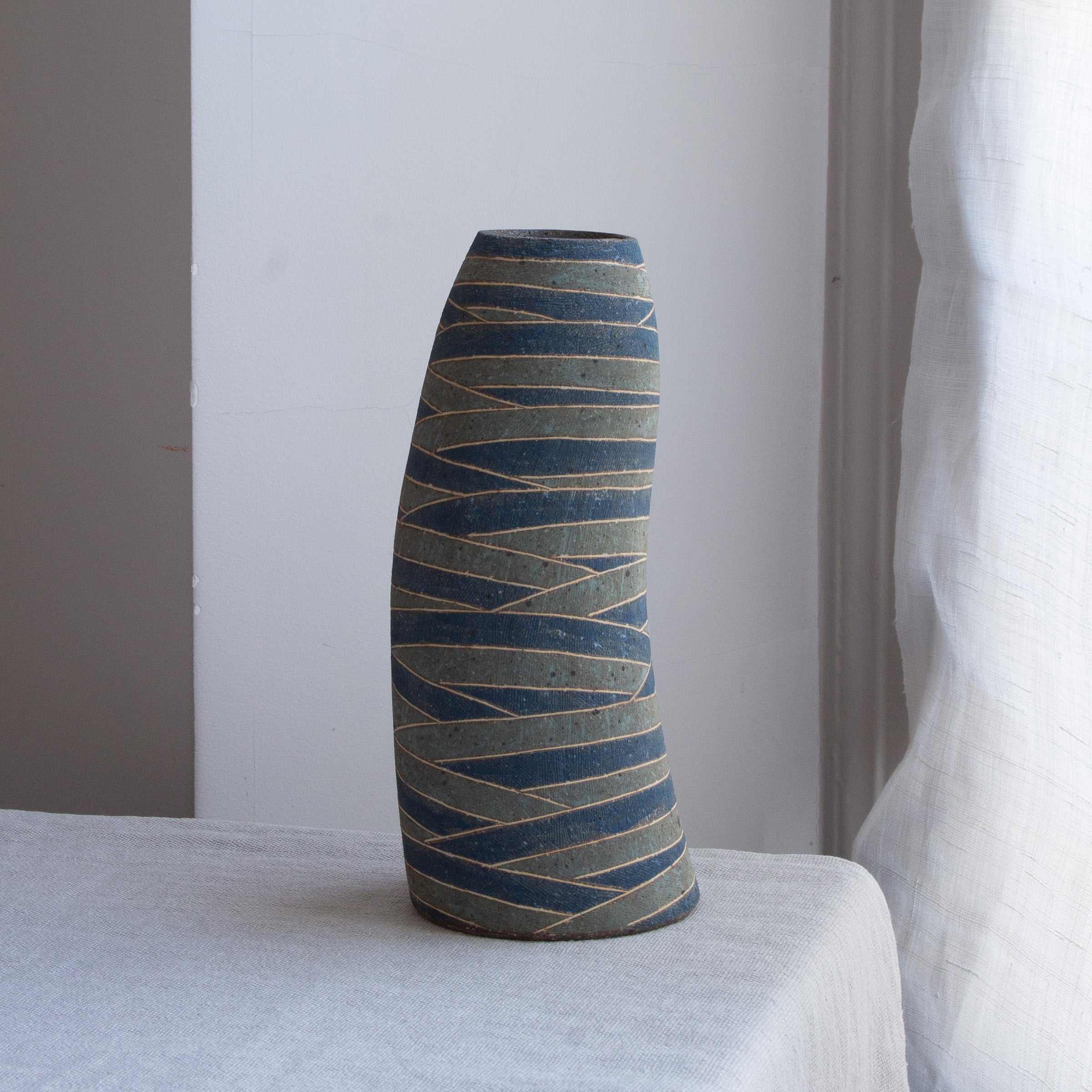
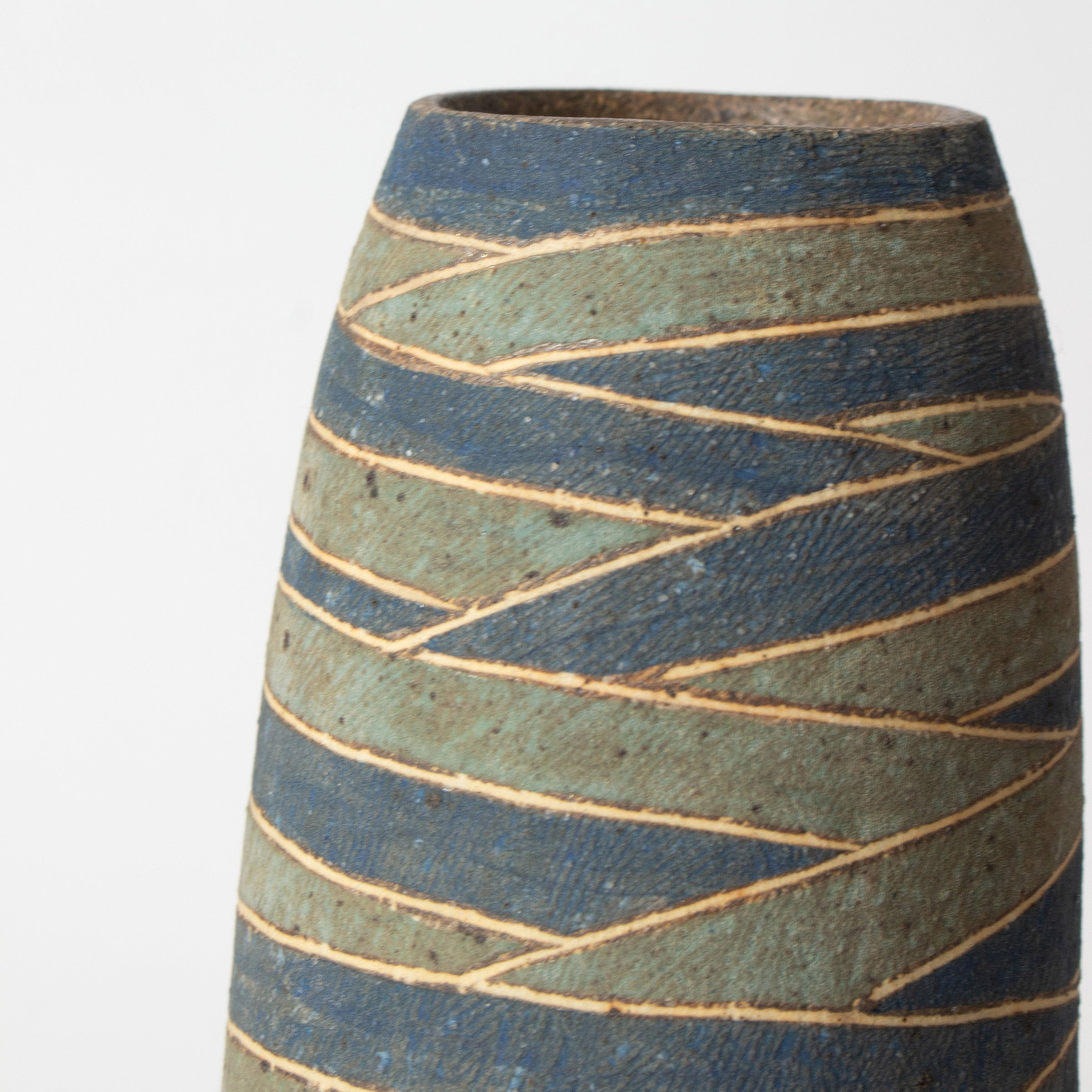
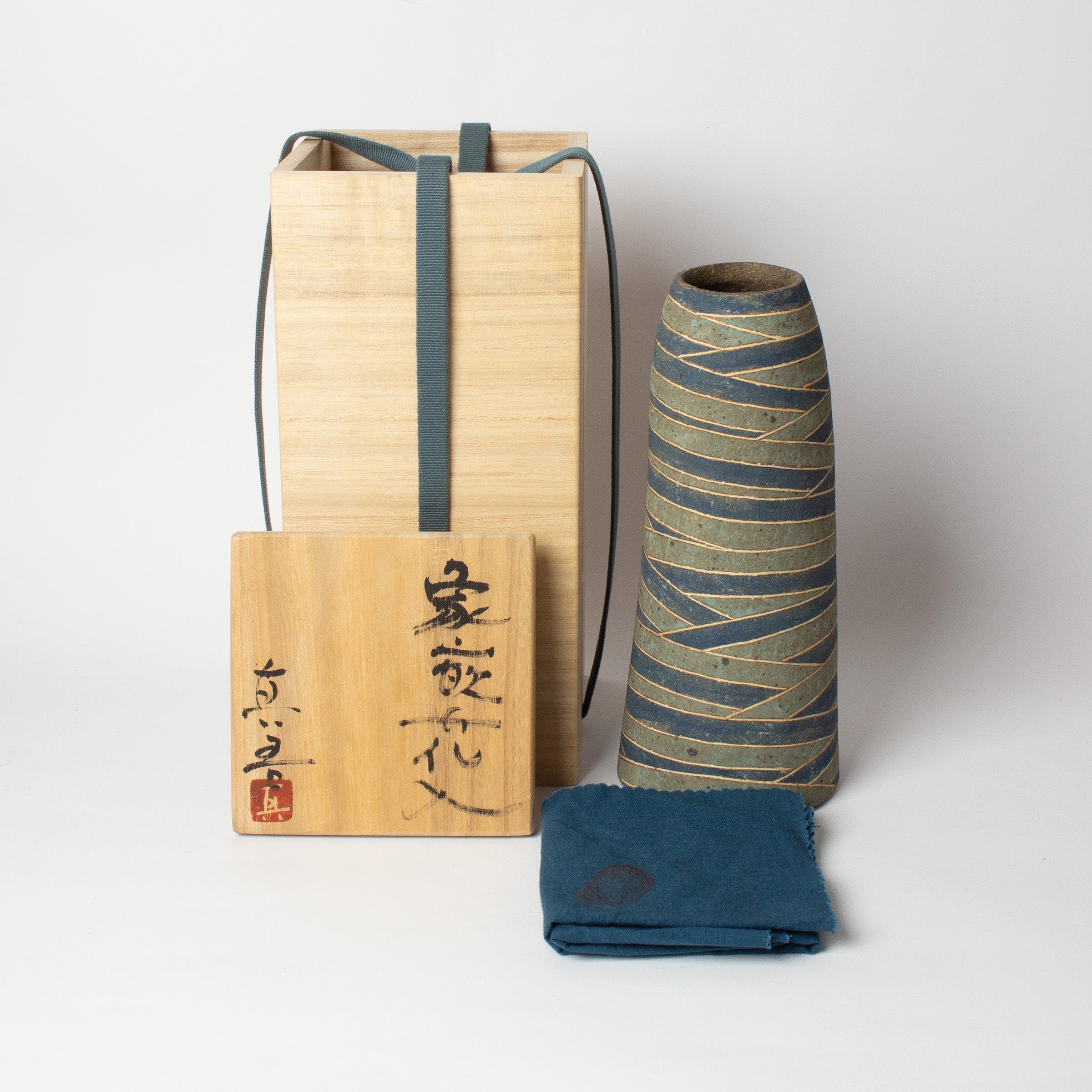
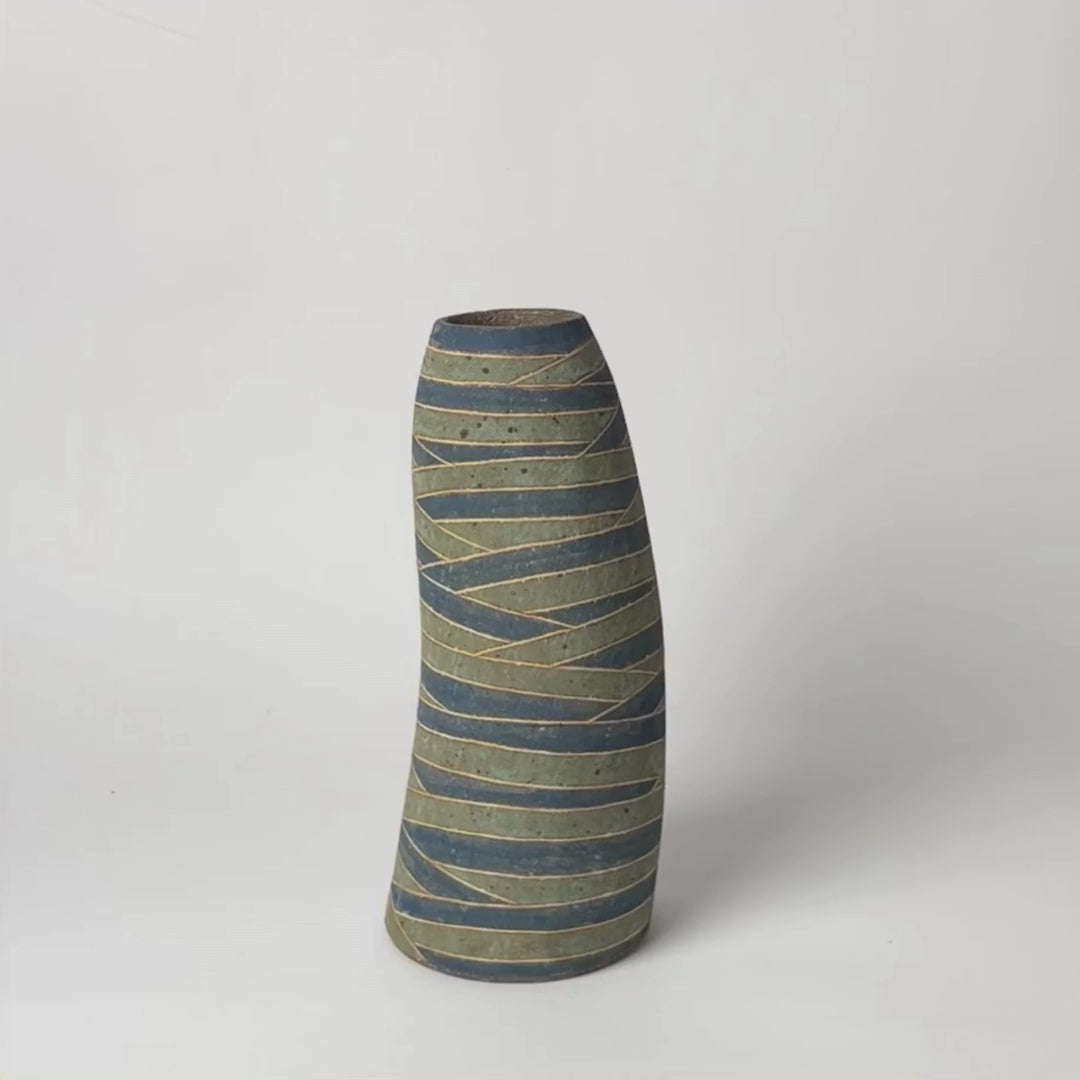
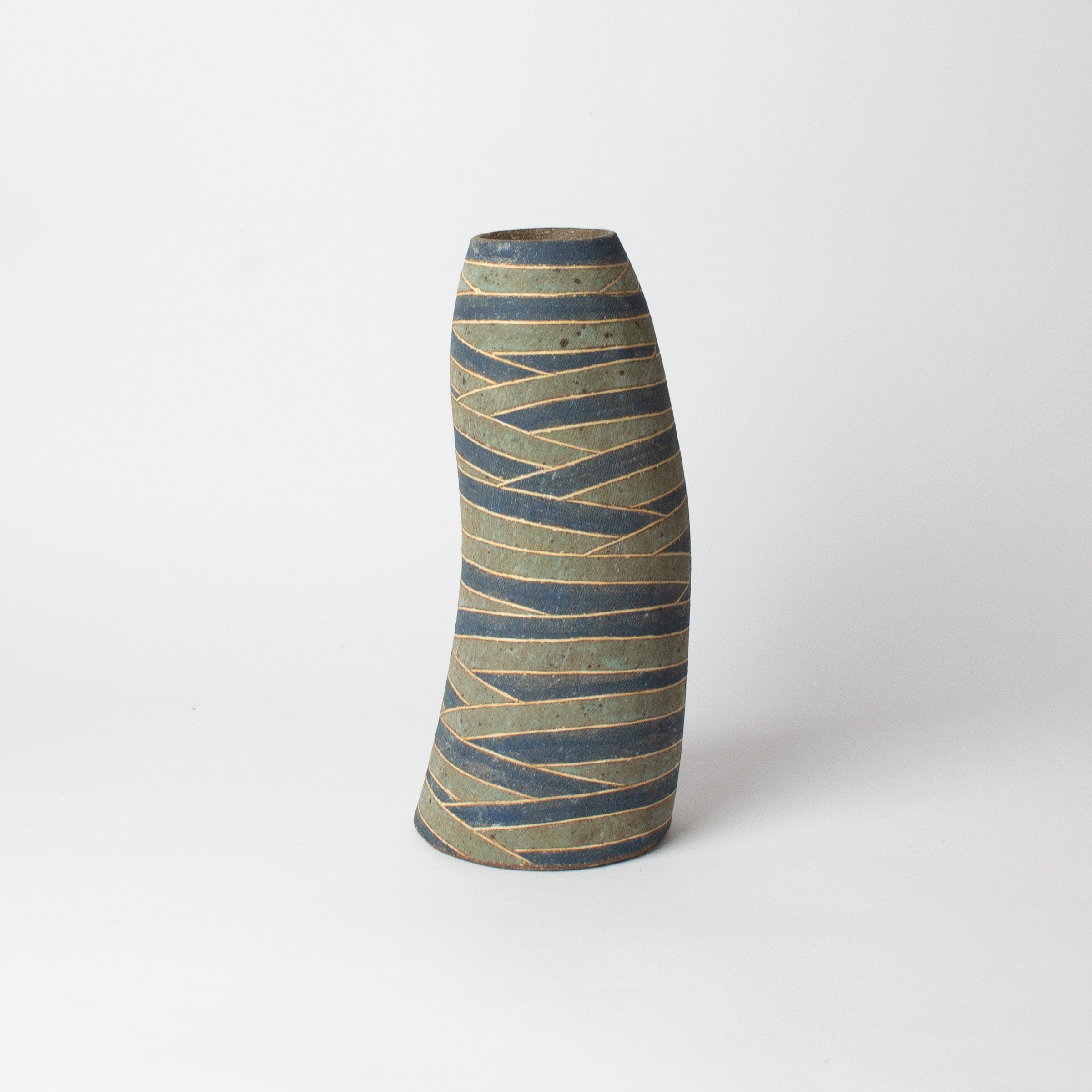
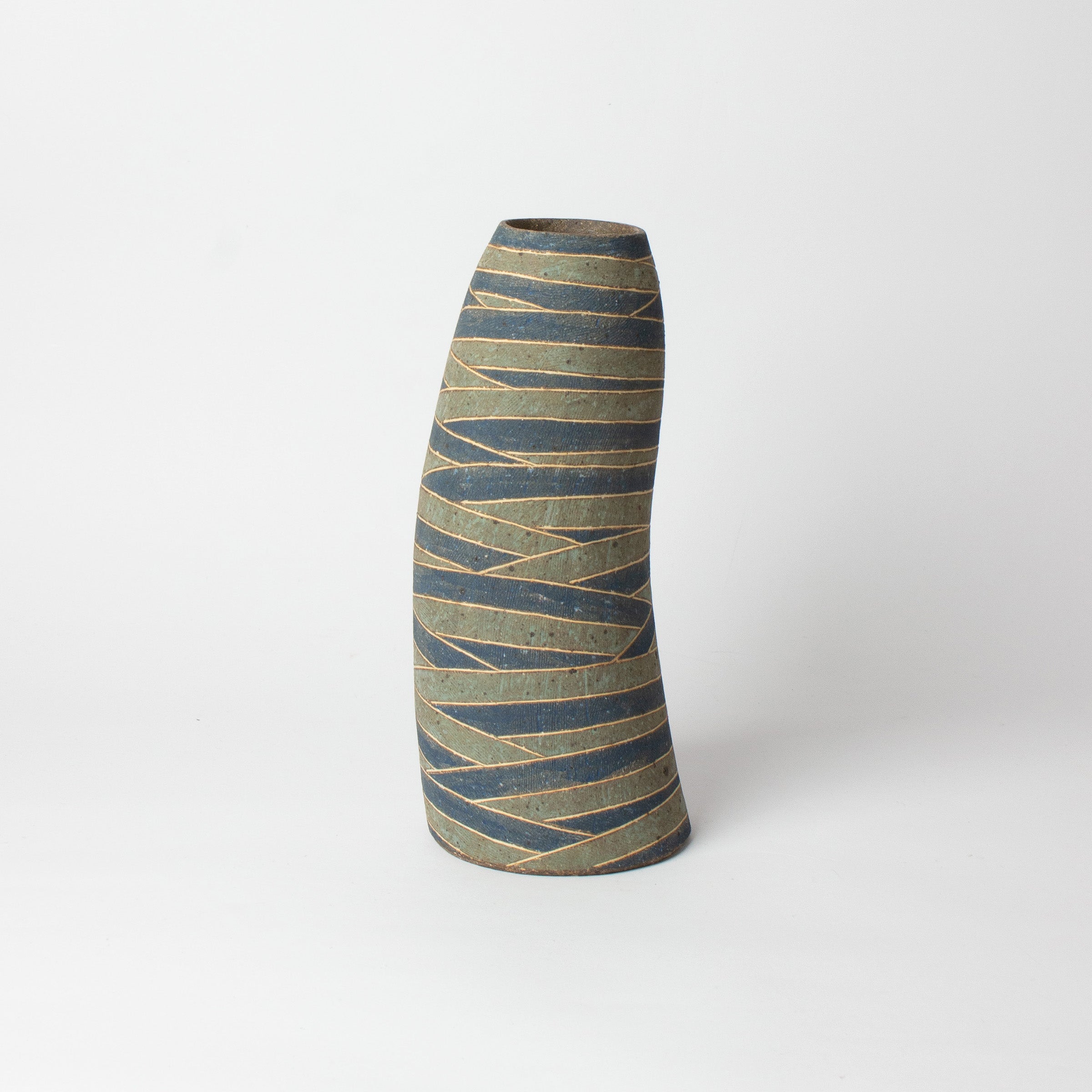
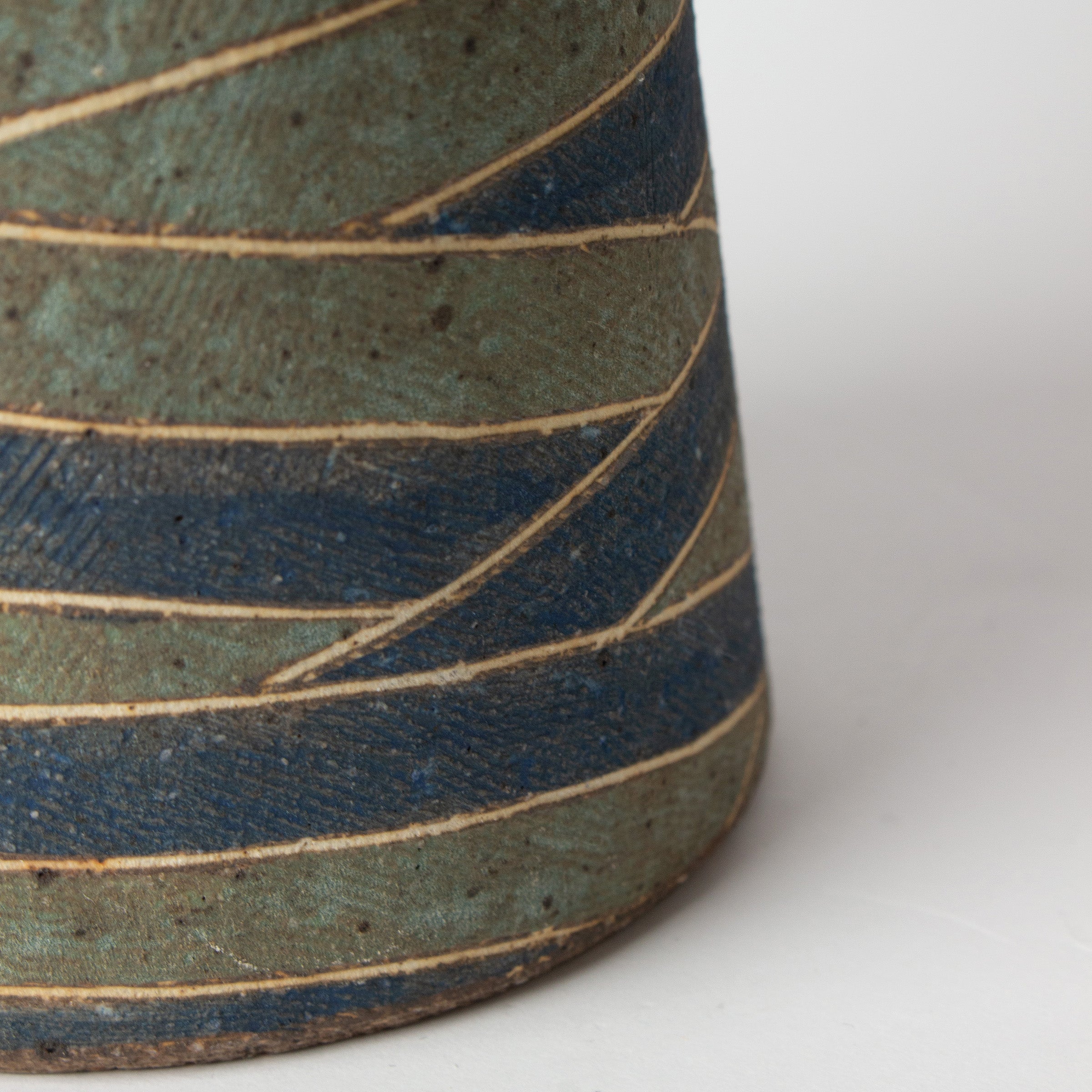
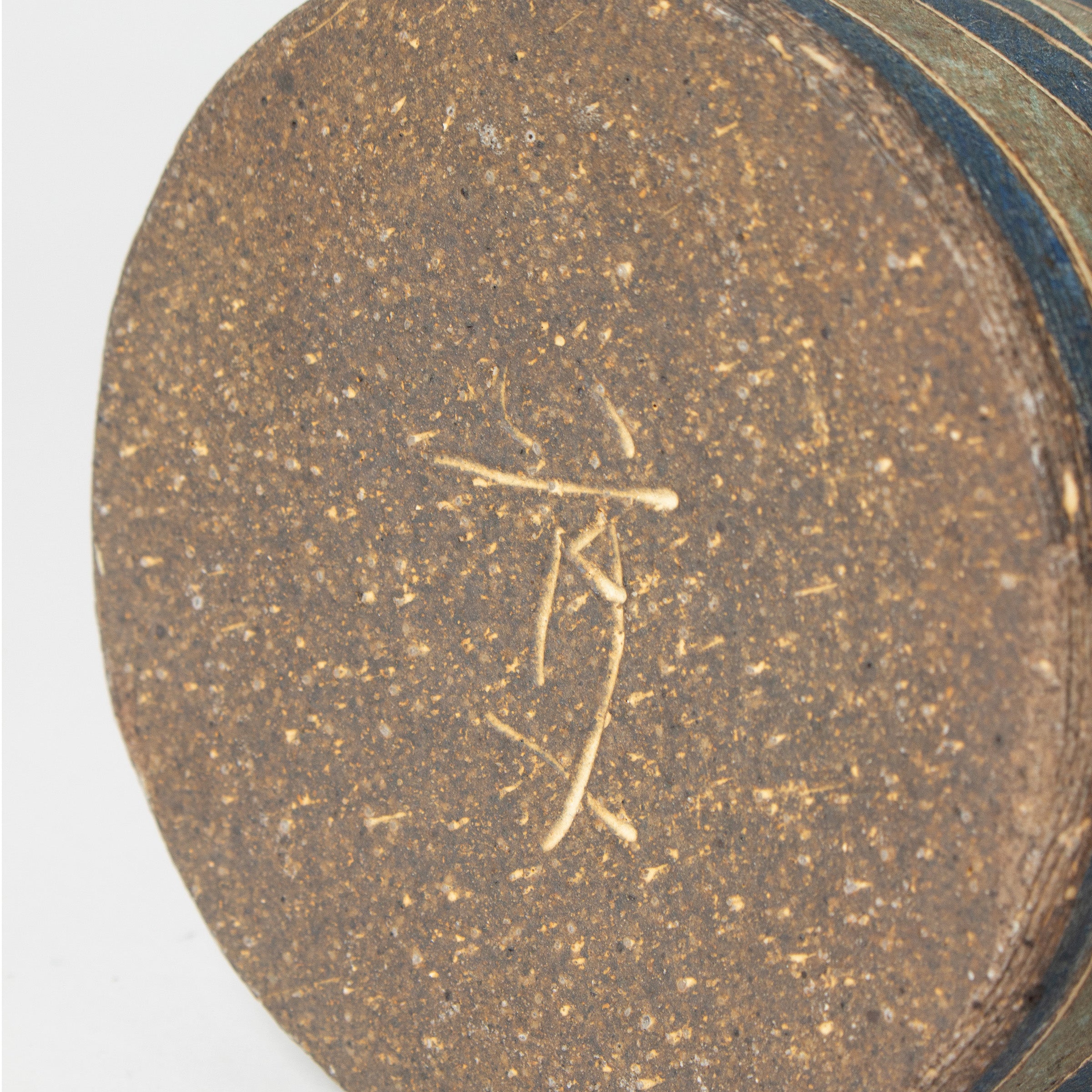



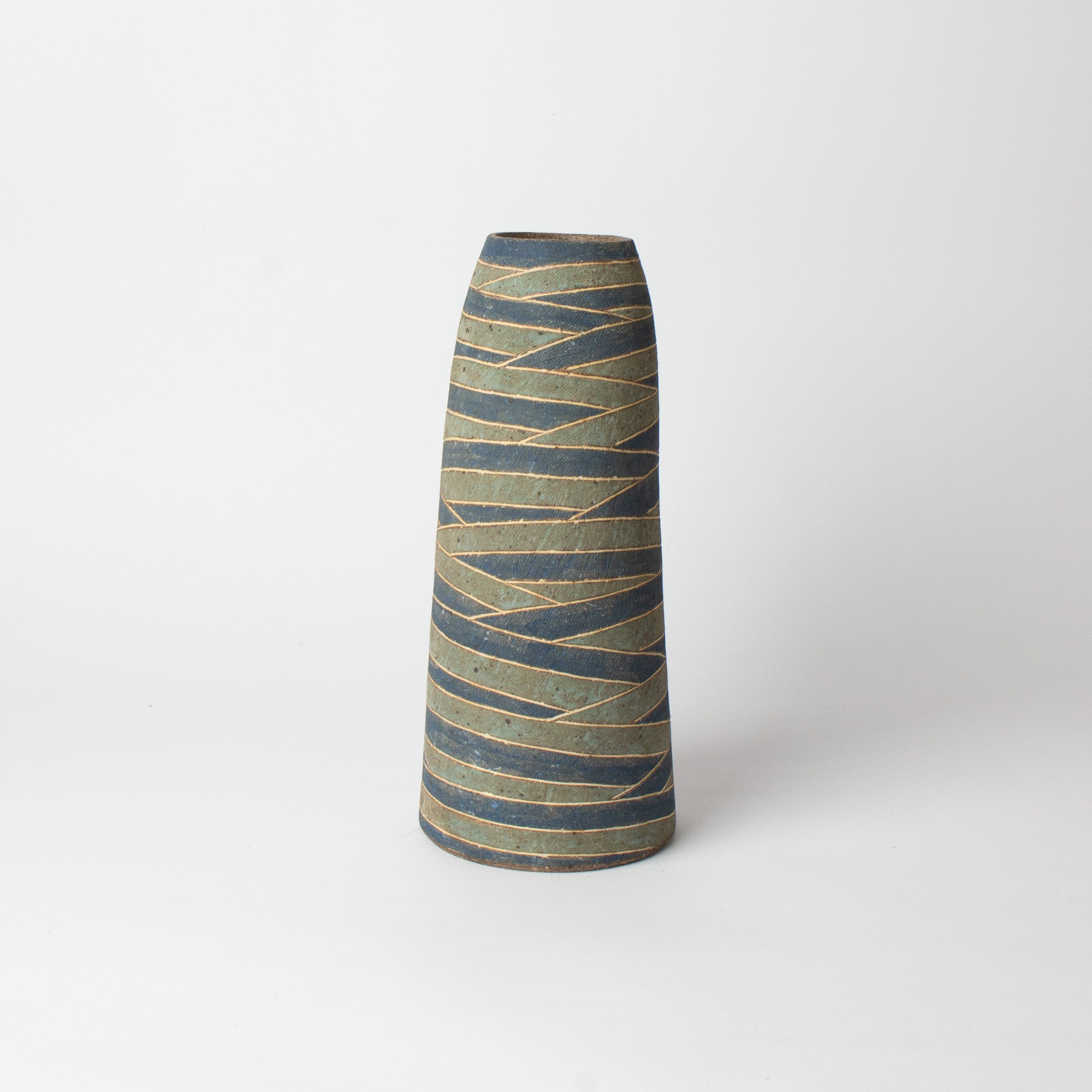
Zōgan vase-sculpture by Shingo Takeuchi
This vase-sculpture , handcrafted by Shingo Takeuchi, is distinguished by its subtly undulating contemporary lines, as if animated by a slight, deliberate imbalance. Its silhouette seems to oscillate imperceptibly between verticality and organic tension. Made of stoneware from a blend of Seto and Shigaraki clays chosen for their texture and iron content, it has a matte surface with warm hues. The inlaid decoration (zōgan), inherited from a long Japanese ceramic tradition, The technique of inlaying a light-colored slip into engraved motifs is revisited by Shingo Takeuchi on this vase with contemporary subtlety, playing on the delicacy of the decoration and the depth of the materials. Contrasting pigments enrich the surface before a matte slip made from rice ash is applied. After reduction firing, careful brushing reveals the protected lines and hidden nuances, in a beautiful harmony of tones.
Shingo Takeuchi, born in 1955 in Seto, Aichi Prefecture, One of the great historical centers of Japanese ceramics, he is renowned for his unique approach to inlaid decoration applied to deliberately irregular, entirely hand-crafted forms. A graduate of the Aichi School of Ceramics, he founded his own studio in 1982. His highly contemporary and sculptural work, exhibited in major institutions in Japan and internationally, renews the zōgan tradition through constant exploration of material and form.
This vase is signed at its base by the ceramist. It comes with a beautiful wooden protective box (tomobako) bearing the artist's seal and signature, which closes with a sanadahimo cord, and a protective cloth (tomonuno) bearing the artist's seal.
| PLACE OF MANUFACTURE | JAPAN |
| DIMENSIONS | Height 22cm - Diameter 9.5cm |
|
WEIGHT |
1.2kg (vase + box) |
| MATERIALS | Ceramic |
KNOW-HOW
Japanese ceramics, born more than 10,000 years ago, are a dialogue between earth and fire, a quest for harmony through imperfection.
With a wide variety of high-quality raw materials, such as rich clays and natural glazes, each region has developed its own techniques, reflecting the identity of its terroir.
Hand-crafted, these vases, made using the most precious Japanese ceramic techniques, bear the imprint of a master craftsman who is the heir to a thousand-year-old tradition. This living art embodies the essence of Japan, where history and nature unite in beauty.
Although deeply rooted in tradition, these exceptional Japanese ceramic vases, signed by very big names, have a resolutely contemporary spirit while preserving their authenticity, incredibly decorative and wonderfully timeless sculptural pieces.
DELIVERY
Delivery
Free delivery in mainland France for purchases over €200. Orders are generally dispatched within 2 working days, except in special cases, as indicated in the banner at the top of the website.
Precious items are wrapped in beautiful fabric, beautifully knotted according to the precious Korean art of pojagi. Some exceptions apply, especially if the items are large. Learn more >
Detailed delivery information is available via this link >
Your invoice will be sent by email
Payment methods
By card (Stripe operator): Visa, MasterCard, Discover, American Express.
Secure card payment with 3D Secure.
By PayPal, Apple Pay, Google Pay and Shop Pay
Returns and exchanges
14 days to change your mind.
CARE INSTRUCTIONS
Handle with care. Rub gently with a soft cloth. Do not place near a heat source.
Choose options












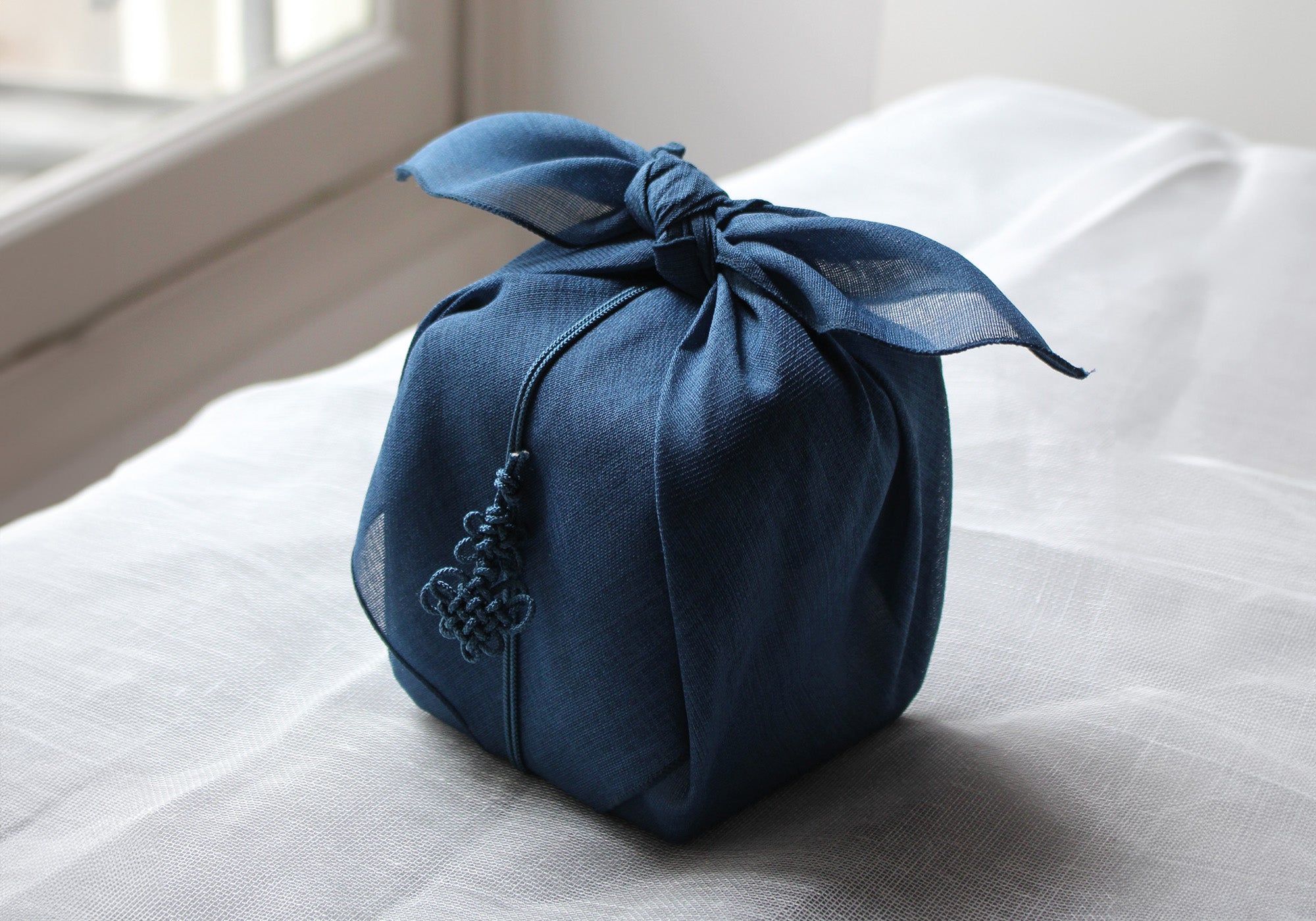
The art of wrapping
The exceptional items are wrapped in a beautiful fabric beautifully knotted using the little-known art of Korean pojagi and decorated with a delightful maedup (Korean ornamental knot). Details and conditions >





